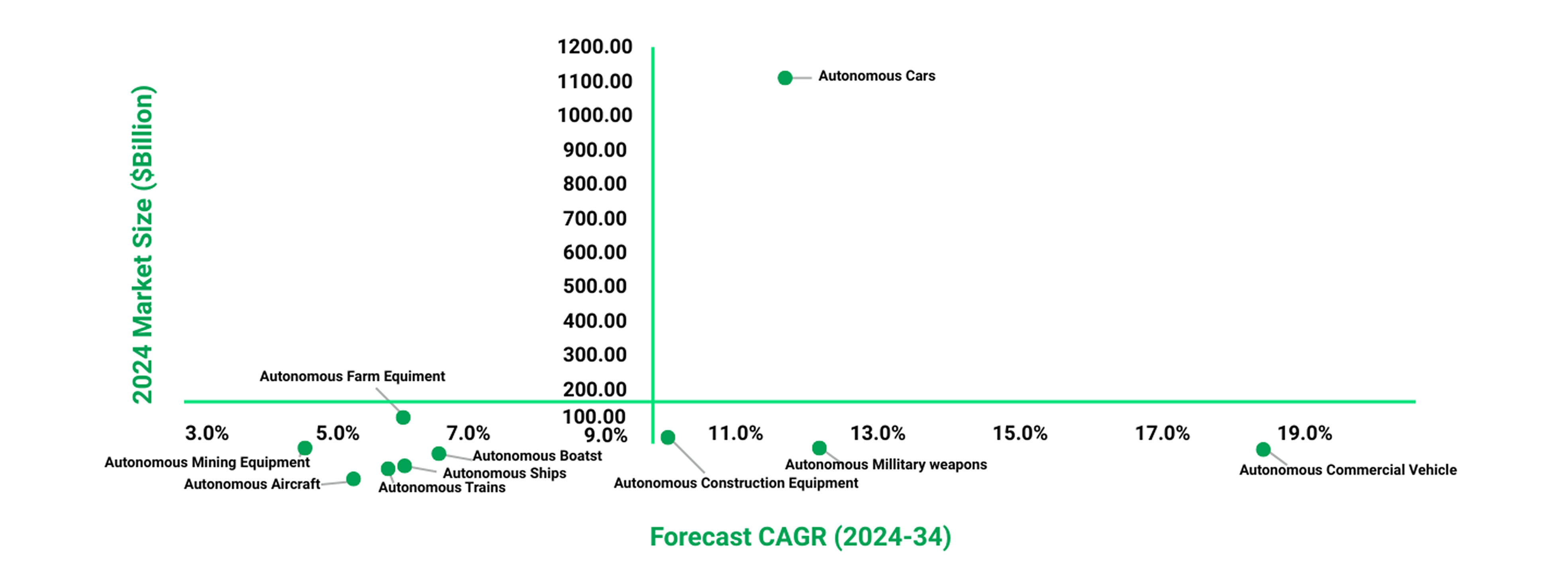As industries worldwide continue to adopt automation, the autonomous systems sector is becoming a defining force across transportation, agriculture, construction, defense, and logistics. Global Market Model analyzed several autonomous technology markets to assess their current size and forecasted growth trends. This analysis explores the adoption and innovation trends across key autonomous sectors, highlighting which markets are mature, which are emerging rapidly.
Reports Store
Top 50 Healthcare Market Reports
NEW
Top 50 Non-Healthcare Market Reports NEW
Opportunities And Strategies Reports
Aerospace And Defense
Agriculture
Chemicals
Construction
Electrical And Electronics
Financial Services
Food And Beverages
Healthcare Services
Hospitality
Information Technology
Machinery
Media

